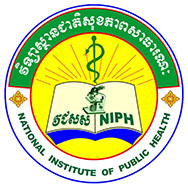Publications Detail
The cascade of hypertension care in Cambodia: evidence from a cross-sectional population-based survey.
BMC Health Services Research Jun, 29, 2023 Show PublicationBackground
Hypertension (HTN) is a leading cause of cardiovascular diseases and deaths globally. To respond to the high HTN prevalence (23.5% among adults aged 40–69 years in 2016) in Cambodia, the government (and donors) established innovative interventions to improve access to screening, care, and treatment at different public health system and community levels. We assessed the effectiveness of these interventions and resulting health outcomes through a cascade of HTN care and explored key determinants.
Methods
We performed a population-based survey among 5070 individuals aged ≥ 40 years to generate a cascade of HTN care in Cambodia. The cascade, built with conditional approach, shows the patients’ flow in the health system and where they are lost (dropped out) along the steps: (i) prevalence, (ii) screening, (iii) diagnosis, (iv) treatment in the last twelve months, (v) treatment in the last three months, and (vi) HTN being under control. The profile of people dropping out from each bar of the cascade was determined by multivariate logistic regression.
Results
The prevalence of HTN (i) among study participants was 35.2%, of which 81.91% had their blood pressure (BP) measured in the last three years (ii). Over 63.72% of those screened were diagnosed by healthcare professionals as hypertensive patients (iii). Among these, 56.19% received treatment in the last twelve months (iv) and 54.26% received follow-up treatment in the last three months (v). Only 35.8% of treated people had their BP under control (vi). Males, those aged ≥ 40 years, and from poorer households had lower odds to receive screening, diagnosis, and treatment. Lower odds to have their BP under-control were found in males, those from poor and rich quintiles, having HTN < five years, and receiving treatment at a private facility.
